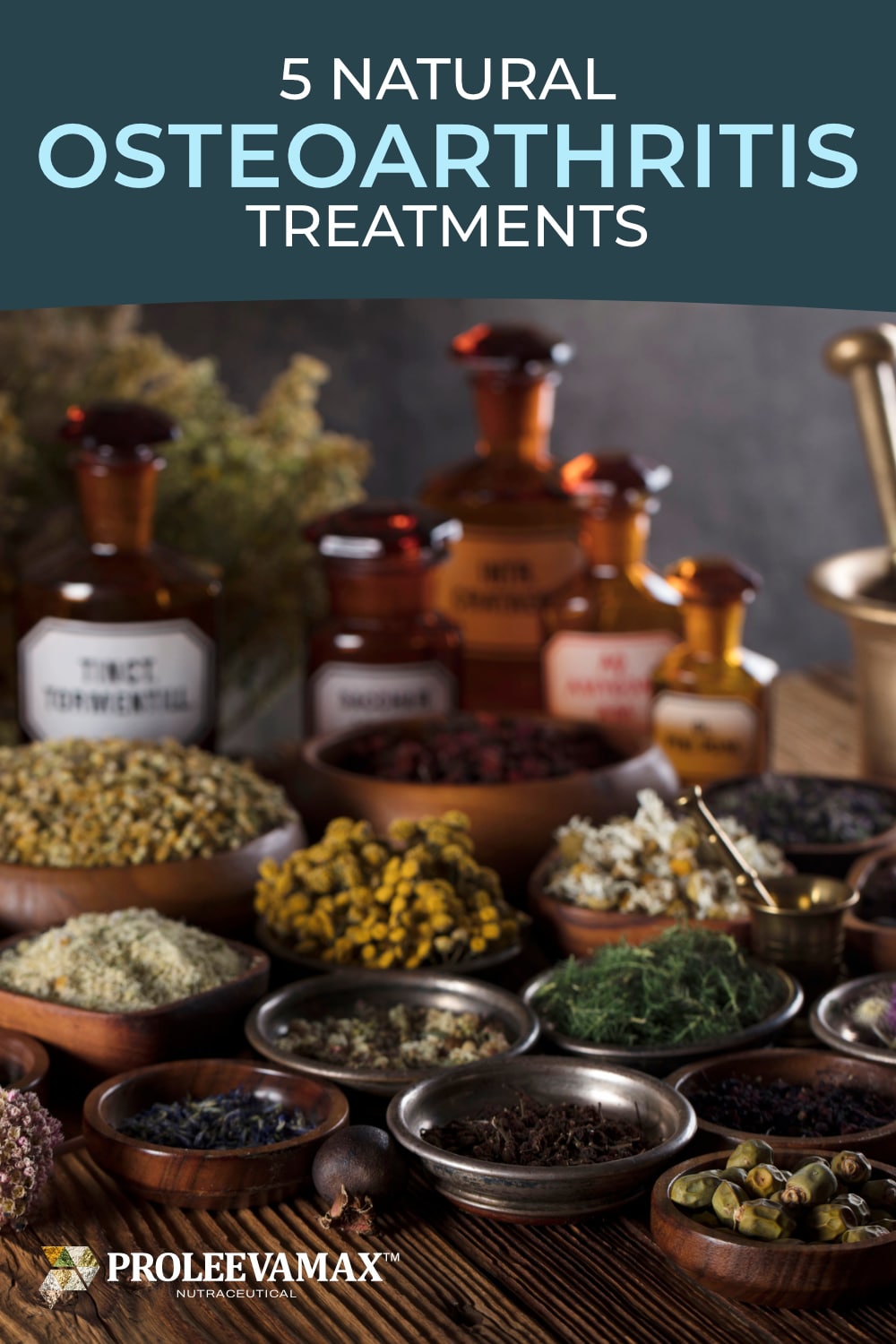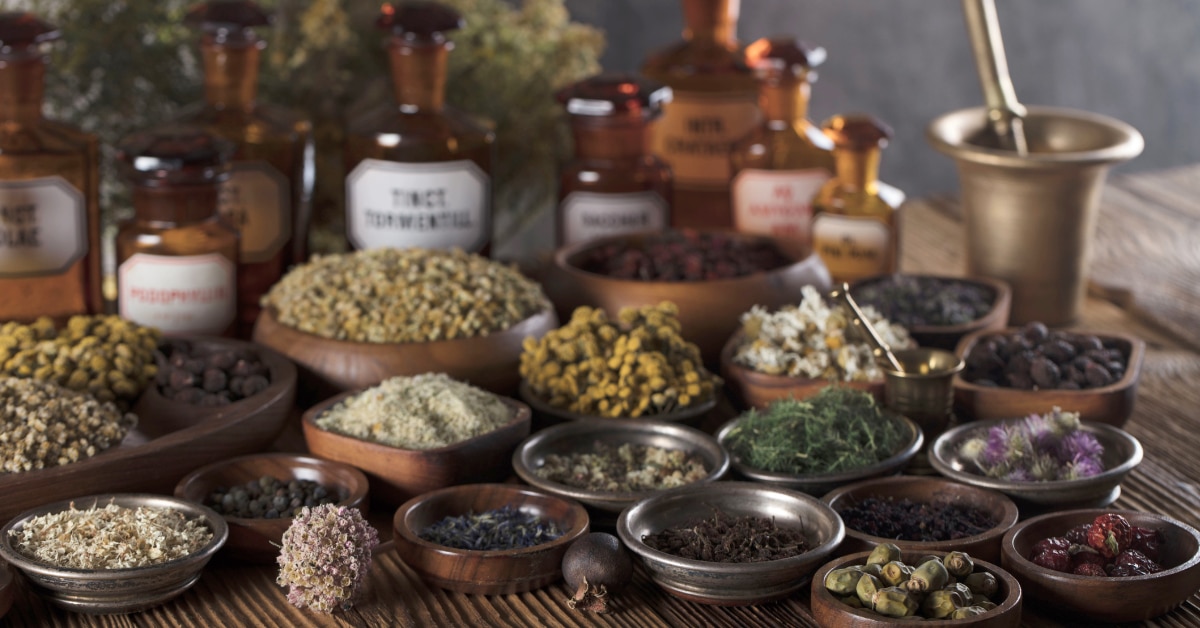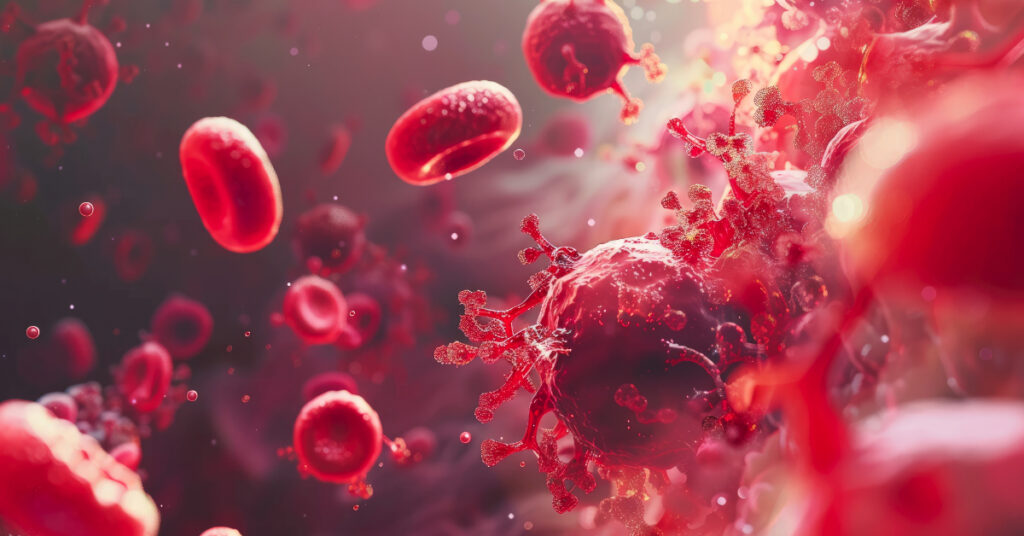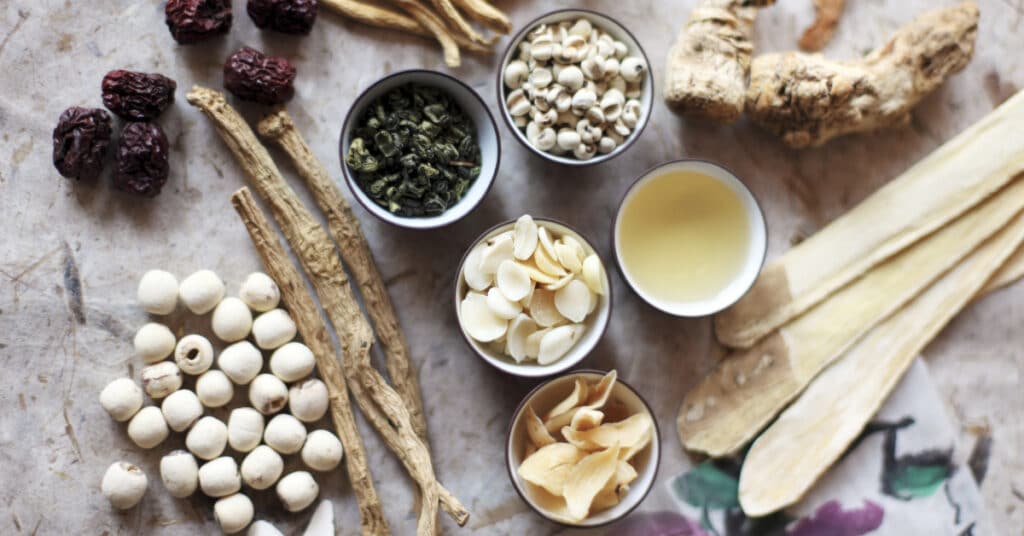The journey through life is rich with experiences that shape our existence, from moments of exhilarating adventure to the quiet passages of daily routines. Amidst this journey, our bodies serve as resilient vessels, enduring the passage of time and the physical demands we place upon them.
Osteoarthritis (OA) emerges as a painful reminder of a lifelong journey, affecting over 32.5 million Americans. It represents not merely the wear and tear of life but also a challenge that invites us to seek harmony with nature and science in an attempt to seek natural osteoarthritis treatment.
What Causes Osteoarthritis?
Understanding osteoarthritis is the first step in confronting it. This degenerative joint disease manifests through the breakdown of cartilage, the body’s intrinsic cushioning that absorbs the shock and friction of movement.
As this protective layer wears down, bones begin to rub against each other, leading to pain, stiffness, and decreased mobility. Osteoarthritis is a complex narrative woven from various threads.
OA is more common as people get older. The wear and tear on joints over time contribute to the breakdown of cartilage. Joint injuries, such as fractures or ligament tears, can increase the risk of developing OA in that joint later in life. Similarly, repetitive stress on joints due to certain occupations or sports activities can also contribute to OA.
There is evidence to suggest that genetics play a role in OA. Certain genetic traits may predispose individuals to develop OA, particularly in weight-bearing joints like the hips and knees. Conditions like rheumatoid arthritis, gout, and Paget’s disease of bone can increase the likelihood of developing OA in the affected joints.
Being overweight or obese puts extra stress on weight-bearing joints, such as the knees and hips. This can accelerate the breakdown of cartilage and increase the risk of developing OA.
Osteoarthritis is more common in women, especially after menopause. Hormonal changes may play a role in this gender difference. Changes in bone density, such as osteoporosis, can affect the integrity of the bones within the joint, contributing to OA development.
While some risk factors cannot be modified, such as age and genetics, individuals can manage others, like obesity and joint injuries, with an all-natural strategy to reduce the risk or slow the progression of Osteoarthritis.
Alleviate Symptoms with these Natural Osteoarthritis Treatments
Hot & Cold Therapy
The application of heat and cold has long been a cornerstone in the natural management of osteoarthritis. This approach, grounded in the simplicity of nature, leverages the body’s responsiveness to temperature changes.
Applying a hot compress to your joints in the morning seeps warmth into stiff joints and muscles, increasing circulation and relaxing muscles. This can make it easier for you to move and reduce morning stiffness.
Cold compresses reduce inflammation and numb discomfort, alleviating pain. After a long day working at the computer or cultivating a garden, this provides natural relief for OA symptoms.
Using heat and cold alternately can provide quick relief and work well with the body’s natural healing process.
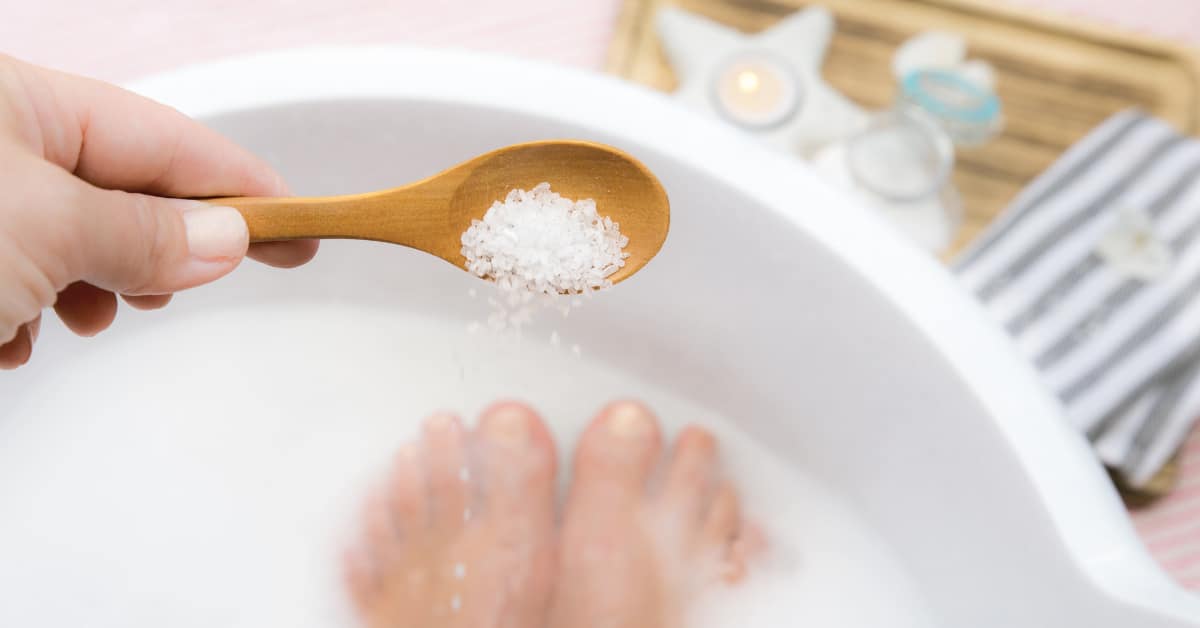
Balneotherapy aka Epsom Salt Baths
Epsom salt baths merge the tranquility of warm baths with the therapeutic benefits of magnesium, a mineral celebrated for its anti-inflammatory properties. Submerging in these mineral-rich waters can soothe joint pain, providing a sanctuary of relief and relaxation.
This age-old remedy, transcending the mere act of bathing, offers a holistic approach to easing the symptoms of osteoarthritis, melding relaxation with physical wellbeing. Known as balneotherapy, epsom salt baths are part of a time-honored therapeutic approach to managing the symptoms of medical conditions, including the discomfort of osteoarthritis.
It’s here, in this serene sanctuary, that the body finds a reprieve from the daily battles with stiffness and pain. A 2019 study highlights the powerful benefits of combining balneotherapy and physical therapy in the fight against knee osteoarthritis. This combination is more effective at reducing symptoms than just physical therapy. It is a big step towards feeling better.

A Healthy Weight & Nutritious Diet Reduces Inflammation
Natural osteoarthritis management extends into the realms of diet and weight management. The Arthritis Foundation emphasizes the critical role of maintaining a healthy weight and adopting an anti-inflammatory diet, drawing upon the principles of the Mediterranean diet.
Excess body weight increases inflammation and stress on weight-bearing joints, such as the knees and hips. Maintaining a healthy weight through a balanced diet and regular physical activity helps reduce inflammation and improve osteoarthritis symptoms.
In the sun-kissed lands surrounding the Mediterranean Sea, there’s a culinary tradition as rich and diverse as the cultures it represents. A way of eating that nourishes the body and soothes the soul. This is the essence of the Mediterranean diet, a dietary pattern celebrated for its remarkable health benefits, including its ability to combat inflammation – a key factor in conditions like osteoarthritis (OA).
At the heart of this dietary tradition lies an understanding of the healing power of food. The Mediterranean diet features an abundance of plant-based foods, including fruits, vegetables, whole grains, nuts, and seeds. These nutrient-rich foods are not only delicious but also packed with antioxidants and anti-inflammatory compounds that can help soothe the aches and pains of conditions like OA.
Including a wide variety of colorful fruits and vegetables, which are rich in antioxidants and phytonutrients, help neutralize free radicals in the body, reducing inflammation. Choosing whole grains over refined grains helps to reduce inflammation and provide essential nutrients and fiber. Healthy fats from sources such as olive oil, nuts, seeds, and avocados have anti-inflammatory properties and can help reduce inflammation in the body.
Best of all, the Mediterranean diet incorporates a variety of herbs and spices, such as garlic, turmeric, ginger, and oregano, which have anti-inflammatory properties and add amazing flavor to dishes without the need for excessive salt or added sugars.
This approach addresses the inflammation at the heart of osteoarthritis pain. It’s a testament to the power of food as medicine, offering a foundation upon which to build a natural approach to managing OA symptoms.
Increase Flexibility & Strength with Exercise
Exercise offers hope in managing osteoarthritis, showing that movement can both trigger and relieve pain. Engaging in low-impact activities such as swimming, cycling, and yoga strengthens the muscles surrounding the joints, enhancing support and flexibility.
This can lead to reduced pain and improved mobility. Tailoring an exercise regimen to individual capabilities and pain thresholds is key, transforming exercise from a daunting challenge into a joyful and natural way to manage osteoarthritis symptoms. Consult a physical therapist or a healthcare provider for guidance on the best exercises for your condition.

Tai Chi Promotes a Mind Body Connection
Continuing the discussion on low-impact exercise for osteoarthritis, we must emphasize the ancient practice of Tai Chi. Many people have long touted Tai Chi as beneficial for individuals dealing with osteoarthritis.
The practice involves careful postures and gentle movements that increase range of motion and strengthens muscles. Balance problems are common in people with OA, especially in weight-bearing joints like the knees and hips. Tai Chi includes exercises that help improve balance and stability by shifting weight and increasing body awareness. This can reduce the chances of falling and getting hurt.
Tai Chi incorporates deep breathing and mindfulness techniques, which can help reduce stress and promote relaxation. Chronic stress can exacerbate pain and inflammation in individuals with OA, so managing stress through Tai Chi may help alleviate symptoms.
Tai Chi has been shown to produce pain relief and improve function in individuals with knee osteoarthritis, likely due to its multifaceted approach to managing the condition. These practices underscore the importance of integrating mind-body techniques into a natural osteoarthritis treatment plan.
Check out this Tai Chi beginner video that you can gently explore in the comfort of your own home.
Supplements for Joints
Researchers widely discuss and study the role of supplements, such as glucosamine and chondroitin sulfate, in managing osteoarthritis. Patients have added these natural substances, which are part of the joint cartilage, to their diets with the intention of helping rebuild lost joint cartilage.
However, the evidence from several studies, including the large multicenter GAIT trial, suggests that these supplements likely provide little to no benefit to individuals with osteoarthritis. The trial compared the effects of glucosamine, chondroitin sulfate, both in combination, an NSAID, and a placebo over 24 weeks of treatment.
The findings revealed no significant difference in pain scores between the placebo group and those taking the supplements, except in a small subset of patients with severe pain. Nonetheless, the results for this group were liable to error due to the small sample size.
Additionally, while one animal study suggested a potential for kidney damage from these supplements, this has not been confirmed in humans. These insights highlight the necessity of consulting healthcare professionals before adding any supplements to your osteoarthritis management regimen, underscoring the importance of evidence-based approaches in the treatment of this condition.
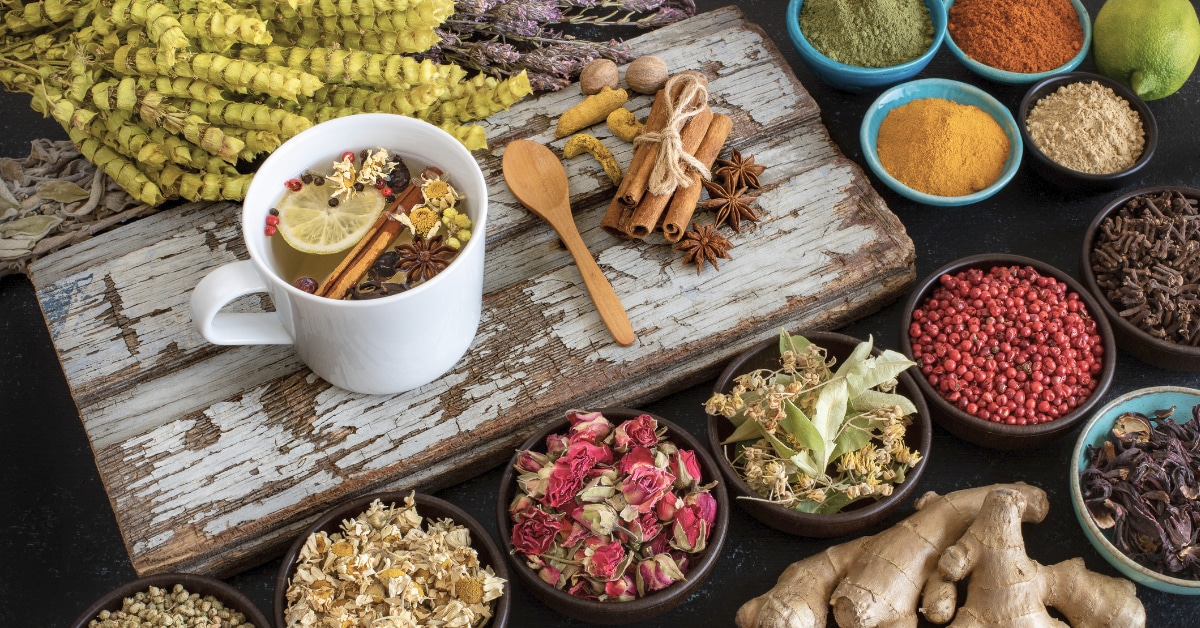
Natural Nutraceuticals: ProleevaMax
In the quest for holistic management of osteoarthritis, ProleevaMax emerges as a beacon of innovation. This supplement encapsulates the synergy between natural ingredients and scientific research, blending a selection of all-natural ingredients to decrease inflammation and reducing oxidative damage.
Below are three ingredients included in ProleevaMax’s formula that have been used for centuries or are new to the scientific field for potential health benefits for those suffering from osteoarthritis.
Curcumin (Turmeric)
Curcumin is a compound found in turmeric that is receiving a lot of attention for its potential health benefits. Some of these benefits include reducing inflammation and acting as an antioxidant. Several studies have investigated the effectiveness of curcumin for osteoarthritis, and the results are promising.
Here’s how curcumin may potentially help individuals with OA:
Anti-Inflammatory Effects
Inflammation plays a significant role in the development and progression of OA, contributing to pain and joint damage. Curcumin has been shown to have potent anti-inflammatory properties, inhibiting the activity of inflammatory molecules and pathways involved in OA.
Antioxidant Properties
Oxidative stress happens when there are too many free radicals and not enough antioxidants in the body. This can cause damage to the joints in osteoarthritis. It is important to maintain a balance between free radicals and antioxidants to prevent joint damage. Curcumin acts as an antioxidant, scavenging free radicals and protecting cells from oxidative damage.
Cartilage Protection
Some research suggests that curcumin may help protect cartilage from degradation by inhibiting enzymes that break down cartilage tissue. This may help slow down the progression of OA and preserve joint function.
Pain Relief
By reducing inflammation and oxidative stress, curcumin may help alleviate pain associated with OA. Several studies have reported improvements in pain severity and joint function in individuals with OA who supplemented with curcumin.
Possible Side Effects
Curcumin is generally well-tolerated, but some people may experience side effects such as:
Gastrointestinal Issues: Curcumin may cause gastrointestinal symptoms such as stomach upset, diarrhea, or nausea, especially when taken in high doses.
Blood-Thinning Effects: Curcumin may have mild blood-thinning effects, so individuals taking blood-thinning medications or with bleeding disorders should use caution and consult with a healthcare professional before using curcumin supplements.
Interactions with Certain Medications: Curcumin may interact with certain medications, including blood thinners, antiplatelet drugs, and medications metabolized by the liver. It’s essential to speak with a healthcare provider before using curcumin supplements, especially if taking other medications.
Resveratrol (Japanese Knotwood)
Resveratrol is a natural compound found in certain plants, particularly in the skin of red grapes, peanuts, and berries and Japanese Knotwood. It has gained attention for its potential health benefits, including anti-inflammatory and antioxidant properties.
Some research suggests that resveratrol may have potential benefits for various health conditions, including cardiovascular disease, cancer, in addition to osteoarthritis (OA). Several studies have explored the potential therapeutic effects of resveratrol on OA, primarily focusing on its anti-inflammatory and antioxidant properties.
Resveratrol may potentially benefit individuals with OA because of the following properties:
Anti-Inflammatory Effects
Inflammation plays a significant role in the progression of OA, contributing to pain and joint damage. Studies have shown that resveratrol has anti-inflammatory effects by inhibiting inflammatory pathways and reducing the production of pro-inflammatory molecules.
Antioxidant Properties
Researchers believe that oxidative stress contributes to the development and progression of OA by damaging joint tissues. Resveratrol acts as an antioxidant, scavenging free radicals and protecting cells from oxidative damage.
Cartilage Protection
Some studies have suggested that resveratrol may help protect cartilage from degradation by inhibiting enzymes that break down cartilage tissue.
Pain Relief
By reducing inflammation and oxidative stress, resveratrol may help alleviate pain associated with osteoarthritis.
Possible Side Effects
Japanese Knotweed is generally considered safe when consumed in moderation, such as in culinary dishes or as a dietary supplement. However, like any herb or supplement, there are potential side effects and considerations to be aware of:
Allergic Reactions: Some individuals may be allergic to Japanese Knotweed or plants in the same family (Polygonaceae), which could result in symptoms such as itching, rash, or difficulty breathing.
Gastrointestinal Issues: In some cases, consumption of Japanese Knotweed may lead to gastrointestinal discomfort, including stomach upset, diarrhea, or nausea, particularly if taken in large doses.
Interaction with Medications: Japanese Knotweed contains compounds that may interact with certain medications, such as blood thinners (anticoagulants) or medications for high blood pressure. It’s essential to consult with a healthcare professional before using Japanese Knotweed supplements, especially if taking other medications.
Oxalate Content: Japanese Knotweed contains high levels of oxalates, which can contribute to the formation of kidney stones in susceptible individuals. Those with a history of kidney stones or kidney disease should exercise caution when consuming Japanese Knotweed.
Boswellia (Indian Frankincense)
Boswellia, also known as Indian frankincense, is an herbal extract derived from the resin of the Boswellia serrata tree. People have used it for centuries in traditional medicine to treat various inflammatory conditions, including osteoarthritis.
Recent, modern scientific research on the effectiveness of boswellia for OA is somewhat limited but promising. Research indicates that boswellia may be effective in reducing inflammation and relieving symptoms of osteoarthritis, such as pain and stiffness.
Similar to the ingredients listed above, boswellia helps relieve Oseoarthritis symptoms by:
Anti-inflammatory Properties
Boswellia contains active compounds, such as boswellic acids, that show anti-inflammatory effects. These compounds may help reduce inflammation in the joints, which is a key symptom of OA.
Pain Relief
In addition to its anti-inflammatory effects, boswellia may also have analgesic (pain-relieving) properties. Research suggests that boswellia extract supplements can reduce osteoarthritis pain and improve joint function.
Cartilage Protection
Boswellia extract has been shown to inhibit the activity of enzymes that degrade cartilage in the joints. By protecting cartilage from degradation, boswellia may help slow down the progression of OA.
Improved Mobility
Some research indicates that boswellia supplementation may improve joint mobility and flexibility in individuals with OA, allowing for better movement and function.
Possible Side Effects
Boswellia is generally considered safe when used appropriately. However, there are potential side effects and considerations to be aware of:
Allergic Reactions: Although rare, some individuals may be allergic to Boswellia resin or its components. Allergic reactions can vary in severity and may include symptoms such as rash, itching, swelling, or difficulty breathing. If you experience any signs of an allergic reaction after taking Boswellia, seek medical attention immediately.
Gastrointestinal Issues: Some people may experience mild gastrointestinal side effects, such as stomach upset, nausea, diarrhea, or acid reflux, when taking Boswellia supplements. These symptoms are usually temporary and can often be alleviated by taking the supplement with food or reducing the dosage.
Interaction with Medications: Boswellia may interact with certain medications, including blood thinners, anti-inflammatory drugs, and immunosuppressants. If you are taking any medications, especially for a chronic health condition, talk to your healthcare provider before adding Boswellia supplements to your regimen.
Blood Thinning: Boswellia may have mild blood-thinning properties, which could potentially increase the risk of bleeding, particularly in individuals taking blood-thinning medications or supplements. If you are on blood thinners or have a bleeding disorder, consult with your healthcare provider before using Boswellia.
ProleevaMax Bridges the Gap Between Science & Nature
ProleevaMax is more than just a natural supplement. It is dedicated to supporting lifestyle changes and natural approaches for managing osteoarthritis symptoms. It represents a bridge between the restorative properties found in nature and the advancements of science, designed to alleviate symptoms and enrich the quality of life for individuals with OA.
As you navigate the complexities of managing osteoarthritis, including ProleevaMax as part of your daily regimen offers a promising avenue towards mitigating osteoarthrititis symptoms and enhancing quality of life. However, embarking on this journey should be a thoughtful decision made in consultation with healthcare professionals.
Choose ProleevaMax for your natural osteoarthritis treatment and enjoy peace of mind with LanFam’s money-back guarantee. Confident in the quality and efficacy of their supplement, LanFam ensures you can explore ProleevaMax’s benefits risk-free, potentially enhancing your journey to a more active life.
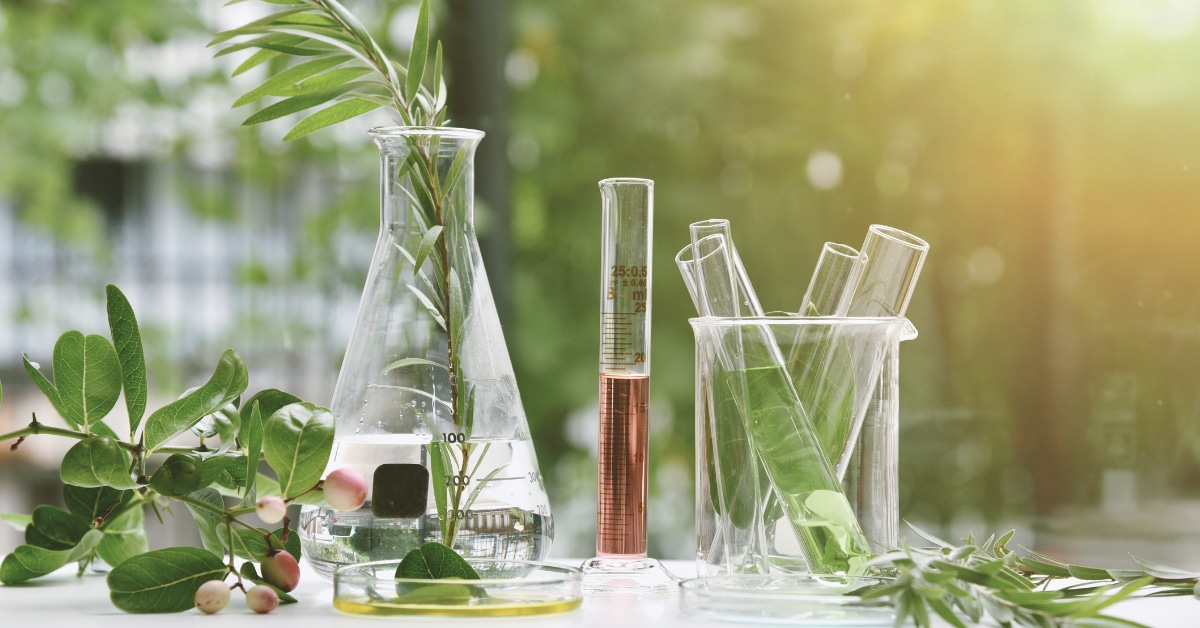
Forging a Path with Natural Osteoarthritis Treatments
Navigating the landscape of natural osteoarthritis treatments necessitates a balance between age-old remedies, exploring new solutions, and being mindful of professional guidance.
The natural osteoarthritis treatment journey with hot and cold therapy, balneotherapy, diet, exercise, supplements, and nutraceuticals like ProleevaMax, should commence with a consultation with your healthcare professional. This ensures that each step taken aligns with your overall health strategy, personalized to your individual medical needs.
Discover how ProleevaMax can transform your life! Watch video testimonials from actual users, or speak directly with one of our experts at (305) 504-8514 to learn more.
